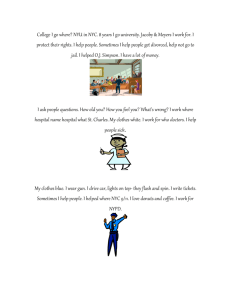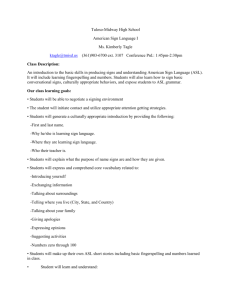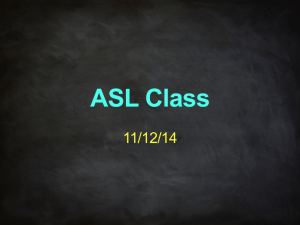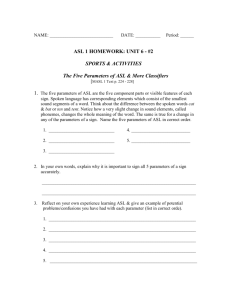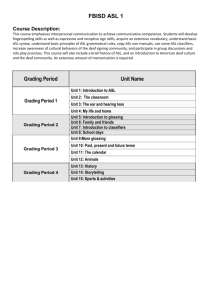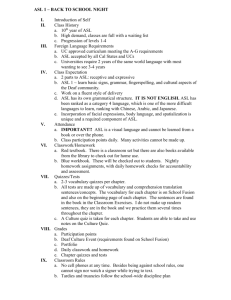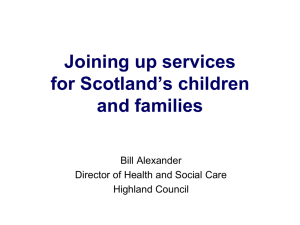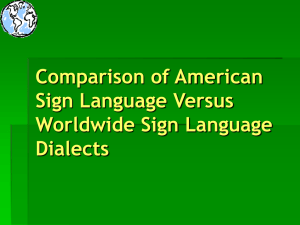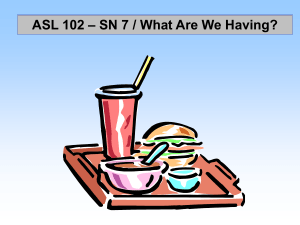What is language notes with answers
advertisement
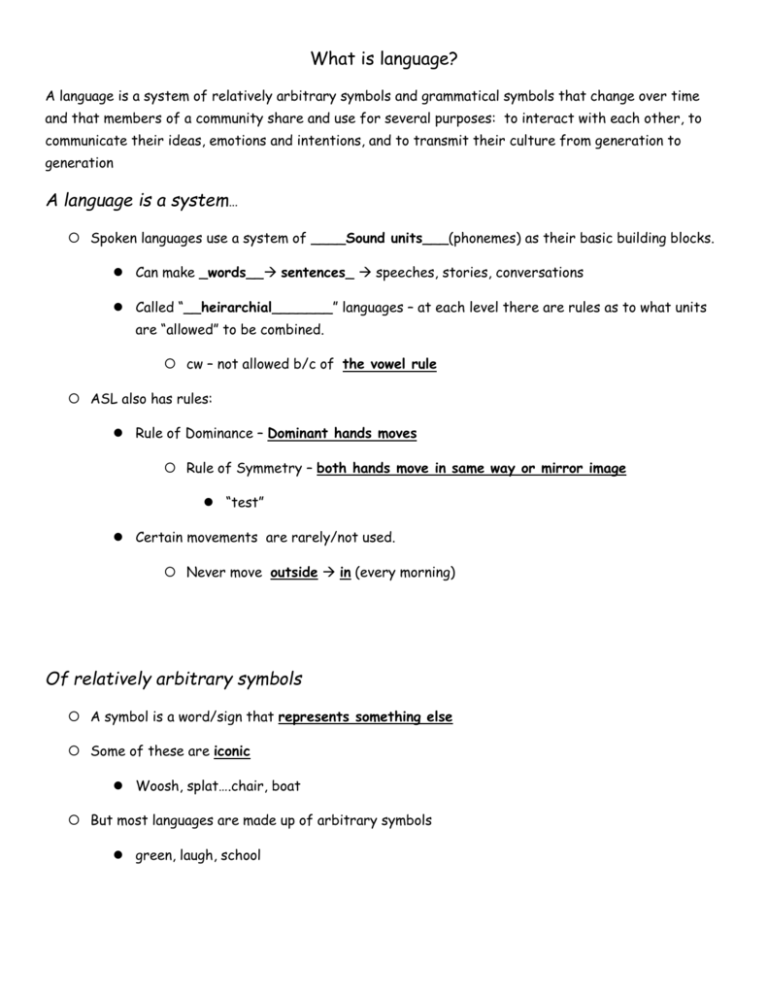
What is language? A language is a system of relatively arbitrary symbols and grammatical symbols that change over time and that members of a community share and use for several purposes: to interact with each other, to communicate their ideas, emotions and intentions, and to transmit their culture from generation to generation A language is a system… Spoken languages use a system of ____Sound units___(phonemes) as their basic building blocks. Can make _words__ sentences_ speeches, stories, conversations Called “__heirarchial_______” languages – at each level there are rules as to what units are “allowed” to be combined. cw – not allowed b/c of the vowel rule ASL also has rules: Rule of Dominance – Dominant hands moves Rule of Symmetry – both hands move in same way or mirror image “test” Certain movements are rarely/not used. Never move outside in (every morning) Of relatively arbitrary symbols A symbol is a word/sign that represents something else Some of these are iconic Woosh, splat….chair, boat But most languages are made up of arbitrary symbols green, laugh, school …and grammatical signals A grammatical signal shows how words are _related to each other. There are two types: In English _word order is important (who does what to whom) John looked at Peter has a different meaning than Peter looked at John ASL changes the forms of the signs themselves or inflects the verbs to show the subject-object relationship J-O-H-N rt john LOOK-at-lf P-E-T-E-R lf or _______t_ P-E-T-E-R lf, J-O-H-N rt john-LOOK-AT-peter Not all symbol orderings are accepted as correct English: looked John Peter ASL: rt-LOOK-AT-lf J-O-H-N-rt P-E-T-E-R-lf ...that change across time Vocabulary changes very quickly – especially slang Groovy, far-out, awesome, cool, rad, sweet, bad, mint, wicked… Your examples: Purpose of slang: Binds people together Creates a boundary to keep people out Vocabulary changes to keep pace with changes in technology. What are some new terms that have emerged over the last 5-10 years related to computers and their use? Languages change to meet the needs of the people who use them. ASL creates new signs by: Compounding (home + work) Changes made to existing signs (help) Lexicalized fingerspelling (loan signs) Three reasons why a word/sign changes: Easier (Brother/sister) More efficient ( know, see you later) New word (Facebook_) Languages sometimes borrow from other languages to meet these changing needs. (Language contact) Lexical borrowing – form changes English - Pizza, bouquet ASL signs for other countries Fingerspelling (English influence on ASL) that members of a community share… Members of a language community must agree about the meanings of the symbols (words/signs) and how to use them in order for communication to take place. This is why you can’t make up signs…no one will understand you. Applies to sub-groups within the larger community as well To interact with each other, to communicate their ideas, emotions, and intentions… Dr. Jane Goodall – Koko Could sign 500 words and “communicate” her wants but… Couldn’t generate her own conversation…couldn’t express her thoughts, ideas, emotions, etc. Meta-language – humans have it, animals do not And to transmit their culture from generation to generation Does language influence our culture or does culture influence our language? YES! Eskimos – 100 words for snow Hopi Indians – time is organic Native Americans – don’t have words for the future tense Language connects us to things that are important to us and pushes us away from what we don’t like. In our American culture, how many words do we have for money? Ex. In our American culture, what do we call someone whose child has died?


